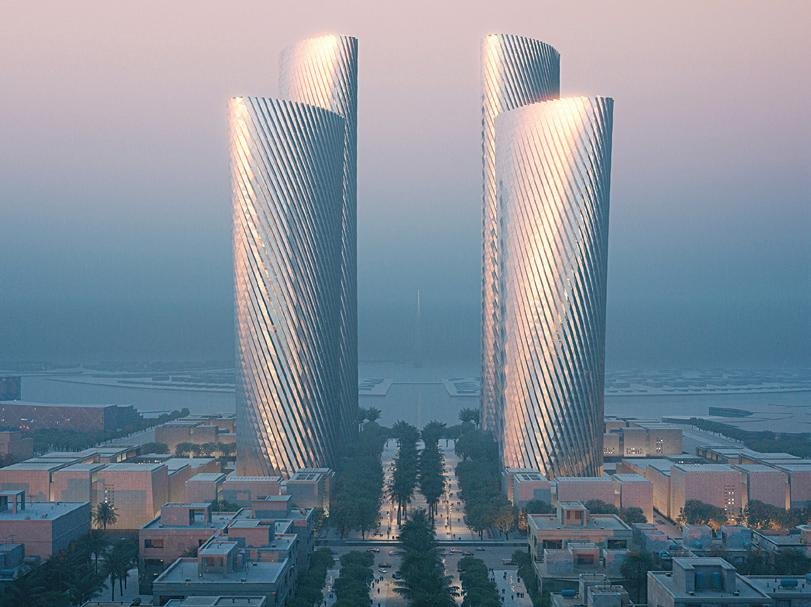
How Modern Storage Solutions Are Supporting Infrastructure Growth in Qatar?
As Qatar accelerates its infrastructure expansion, from expressways and free zones to smart cities and logistics hubs, the need for smarter, scalable storage has never been more critical. Efficient warehousing plays a behind-the-scenes role in keeping materials, equipment, and goods flowing without delay.
According to a recent study, Qatar’s government allocated $57.8 billion (QAR 210.2 billion) in its 2025 national budget for public spending, with a significant emphasis on infrastructure and construction.
To meet this demand, WareOne’s storage solutions are helping businesses manage everything from construction materials to time-sensitive inventory, ensuring projects stay on track and supply chains remain agile.
Why Storage Is a Strategic Priority for Infrastructure Growth?
Behind every construction site, logistics hub, and industrial zone lies a network of warehousing and storage facilities that support daily operations. Without proper storage systems in place, even the most well-funded infrastructure projects can face bottlenecks, delays, and cost overruns.
Key reasons why modern storage is essential for infrastructure growth in Qatar:
- Project continuity: Adequate storage ensures that materials and machinery are available when needed, preventing work stoppages.
- Site safety and organisation: Proper warehousing reduces clutter and risk at high-activity zones like construction sites.
- Supply chain resilience: Strategic storage locations near key infrastructure hubs reduce dependency on long-distance hauling.
- Customs and compliance: Modern storage helps businesses navigate regulations for imported construction materials or sensitive items.
Types of Storage Solutions Driving Efficiency
Not all storage needs are the same. Qatar’s diversified infrastructure projects, from airports to industrial zones, require a variety of warehousing options tailored to the scale, sensitivity, and speed of operations.
Here are some key types of storage making a difference:
- Dry storage warehouses: Ideal for non-perishable materials like cement, steel, and construction tools. These facilities are designed to keep contents safe from dust, moisture, and environmental exposure, crucial for maintaining material quality on long-term projects.
- Temperature-controlled storage: Used for sensitive items like chemicals, paints, adhesives, or medical-grade infrastructure materials. These storage spaces regulate climate conditions to preserve safety standards and prevent spoilage or degradation.
- Bulk storage zones: Suited for high-volume, low-sensitivity goods such as gravel, sand, and aggregates. Often located near construction corridors, these open or semi-covered spaces enable easy loading and dispatch at scale.
- Mobile storage units: Portable containers or modular units placed directly on or near job sites. Perfect for fast-moving projects or temporary inventory needs, they offer flexibility and reduce transit time between storage and the site.
- Secure storage areas: High-security warehousing for storing valuable machinery, imported tech equipment, or restricted goods. These facilities often include surveillance systems, controlled access, and insurance-grade protection features.
Smart Warehousing Technologies in Qatar
Modern storage providers are embracing automation, data, and AI to build smarter, more efficient logistics ecosystems that can adapt to the pace of large-scale infrastructure projects.
Here are the key technologies driving this shift:
- Warehouse Management Systems (WMS): Centralised software that tracks inventory movement, automates stock updates, and provides real-time data on order fulfilment, enabling faster decision-making and fewer manual errors.
- RFID tagging and barcode scanning: These technologies ensure quick, accurate identification of materials and equipment. They reduce paperwork, minimise mismatches, and streamline check-in/check-out processes at the warehouse.
- IoT sensors: Used to monitor environmental conditions like temperature, humidity, and motion. These sensors are especially critical for climate-sensitive materials and enhancing overall warehouse security.
- Cloud integration: Connects warehouse systems to digital dashboards, allowing project managers and supply chain teams to access live inventory and shipment data remotely, improving coordination across sites.
- Predictive analytics: Analyses historical usage patterns and real-time inputs to forecast inventory needs, reduce stockouts, and prevent overordering, helping businesses stay lean and responsive.
These digital upgrades are especially valuable for infrastructure contractors and suppliers in Qatar who are working under tight deadlines and need absolute accuracy, visibility, and efficiency.
Location Advantage: Proximity to Major Infrastructure Zones
In logistics, location is a key enabler of speed and efficiency. Qatar’s leading storage providers are situated near critical infrastructure corridors to reduce transit time, lower costs, and support just-in-time (JIT) delivery.
Key zones driving this advantage include:
- Hamad Port & Industrial Area: Qatar’s main import hub for bulk materials and equipment. Warehouses nearby ensure fast offloading, secure storage, and smooth distribution across the country.
- Ras Bufontas & Umm Alhoul Free Zones: High-tech and logistics-focused zones with proximity to air and sea ports. Ideal for companies requiring bonded storage and fast cross-border movement.
- Al Wakrah & Mesaieed: Industrial centres for oil, gas, and heavy construction. Storage facilities here cater to specialised needs like secure handling of large machinery and hazardous materials.
- Al Majd Road Network: A vital transport corridor linking north and south Qatar. Warehousing along this route supports rapid deployment to multiple infrastructure project sites.
By staying close to these zones, businesses gain logistical flexibility, faster turnaround, and stronger alignment with project timelines.
Final Thoughts
As Qatar continues to scale its infrastructure ambitions, the importance of modern, reliable storage solutions can’t be overlooked. From construction to logistics and energy, having the right storage in the right place, supported by smart technology and strategic planning, is essential to keeping projects on time and within budget.
Businesses that embrace integrated, tech-enabled warehousing are better equipped to handle supply chain challenges and meet the demands of a fast-developing market.




